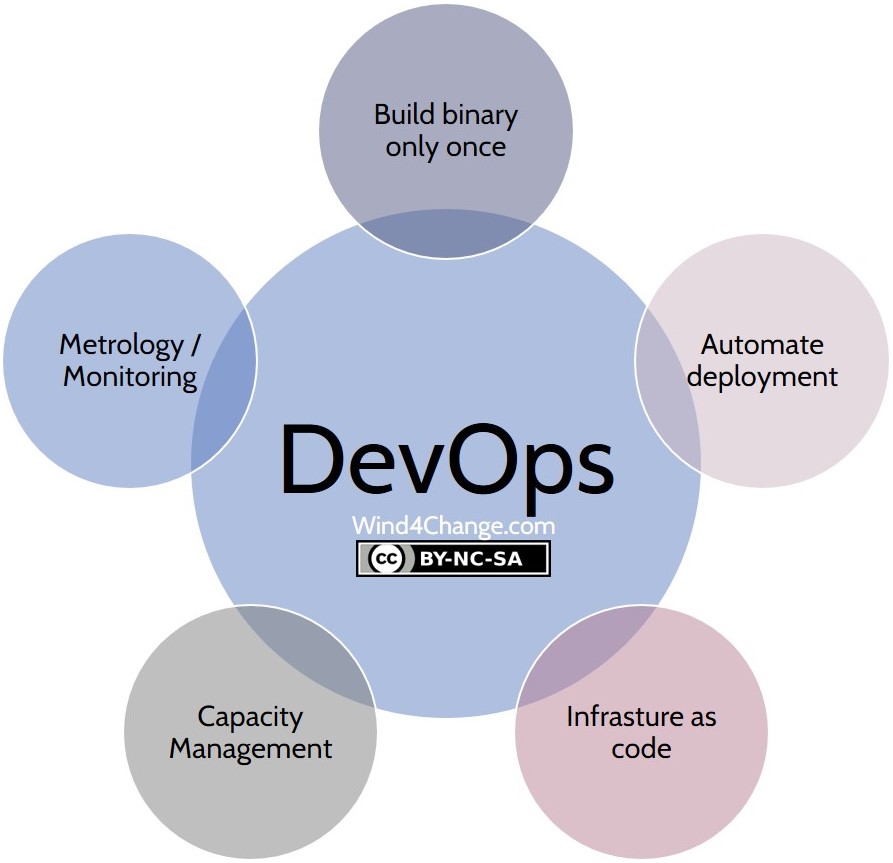What is DevOps and related principles?
What is DevOps?

DevOps is part of Continuous Delivery. It is more than just the automation of the software life-cycle from the creation to the deployment in production. To begin with, DevOps is about close collaboration between developers and production operators to reach a seamless handover from development to production. It also makes it possible for production requirements to be taken into account better and earlier. At last, have we have seen above, it is quite connected to Craftsmanship as most of its practices require or generate automation.
At first, let us review here some practices more related to the traditional IT production area.
Build binary only once
Objective
Aims at building the binary once and only once to ensure a perfect version tracking of the binary.
Value
- Increase
- The efficiency
- The quality
- Decrease the risk
Automate deployment
Objective
No manual tasks remaining for deployment.
Value
- Decrease
- The time to market with a fasten deployment
- The cost of a deployment allowing to roll out more often
- The risk
- Quality: enforce consistency within environments
Infrastructure as code
Objective
Describe infrastructure’s configuration in a technical language, while robots uses this information to maintain infrastructure correlated with its “theoretical” description at any time. Indeed, machines become virtual and are managed with code. Surely, this is closely connected to the cloud: a web storage space with computing resources.
Value
The same as automated deployment:
- Decrease
- The time to market with a fasten deployment
- The cost of a deployment allowing to roll out more often
- The risk
- Quality: enforce consistency within environments
Capacity Management
Objective
Proactively provide relevant machine capacity in a cost efficient mode.
Value
- Decrease
- The time to market
- The risk
- Costs
- Increase the quality
Metrology / Monitoring
Objective
Collect automatically all metrics on all layers and consolidate them to have a smart proactive monitoring available to all stakeholders.
Value
- Increase
- The time to market
- Efficiency and Continuous Improvement with a better visibility on the current situation and the impact of CI’s actions
- Decrease costs
What’s next? Learn more on the other technical area in Continuous Delivery: Craftsmanship
Without a doubt, DevOps is closely connected with Craftsmanship. So, check my other post on this topic. There are also plenty of other materials around Agile and Agile at Scale. In addition, here is my post to have an introduction to Agile at Scale.
Do you want to learn more about DevOps? Here are some references
Note that in the market, the expression DevOps covers both DevOps and Craftsmanship as described in this blog.
- The DevOps page of InfoQ website
- An active website about DevOps
